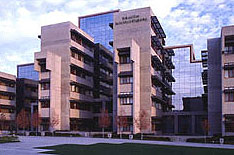The instructional and research programs of the department are grouped into four programmatic focus areas: civil structures, aerospace (composite structures), renewal of structures, and earthquake engineering. Both the undergraduate and graduate programs are characterized by strong interdisciplinary relationships with the Departments of Physics, Mathematics, Bioengineering, Chemistry, Electrical and Computer Engineering, Computer Science and Engineering, the Advanced Manufacturing Program, the Materials Science Program, and associated campus institutes such as the Institute of Geophysics and Planetary Physics, Institute for Pure and Applied Physical Sciences, Institute for Biomedical Engineering, Institute for Mechanics and Materials, Center of Excellence for Advanced Materials, California Space Institute, and Scripps Institute of Oceanography.

Programs and curricula of the Department of Structural Engineering educate and train engineers in a holistic approach to structural systems engineering by emphasizing and building on the commonality of engineering structures in materials, mechanics, analysis and design across the engineering disciplines of civil, aerospace, marine and mechanical engineering.
Structural engineering is traditionally viewed as an activity within civil engineering even though many other engineering disciplines such as aerospace, marine (naval, offshore), and mechanical engineering contain well established discipline-specific structural systems components. In all of the various engineering disciplines there exists a large commonality in the structural materials used, in the general principles of structural mechanics, in the overall design philosophy and criteria, and in the modeling and analysis tools employed for the numerical quantification and visualization of structural response. Particularly, small disciplinary differences in materials and computational tools are rapidly disappearing with the civil engineering community opening up to new structural materials developed and used to date primarily in the aerospace industry, and with computational developments which are less product specific but more geared towards a holistic structural systems design approach with interactive graphics, object oriented data base management and concurrent visualization and data processing. Developments in overall structural systems design are increasingly cross-disciplinary over many traditional engineering areas.
STUDENT AFFAIRS
Location: Structural and Materials Engineering Building, Suite 340.
